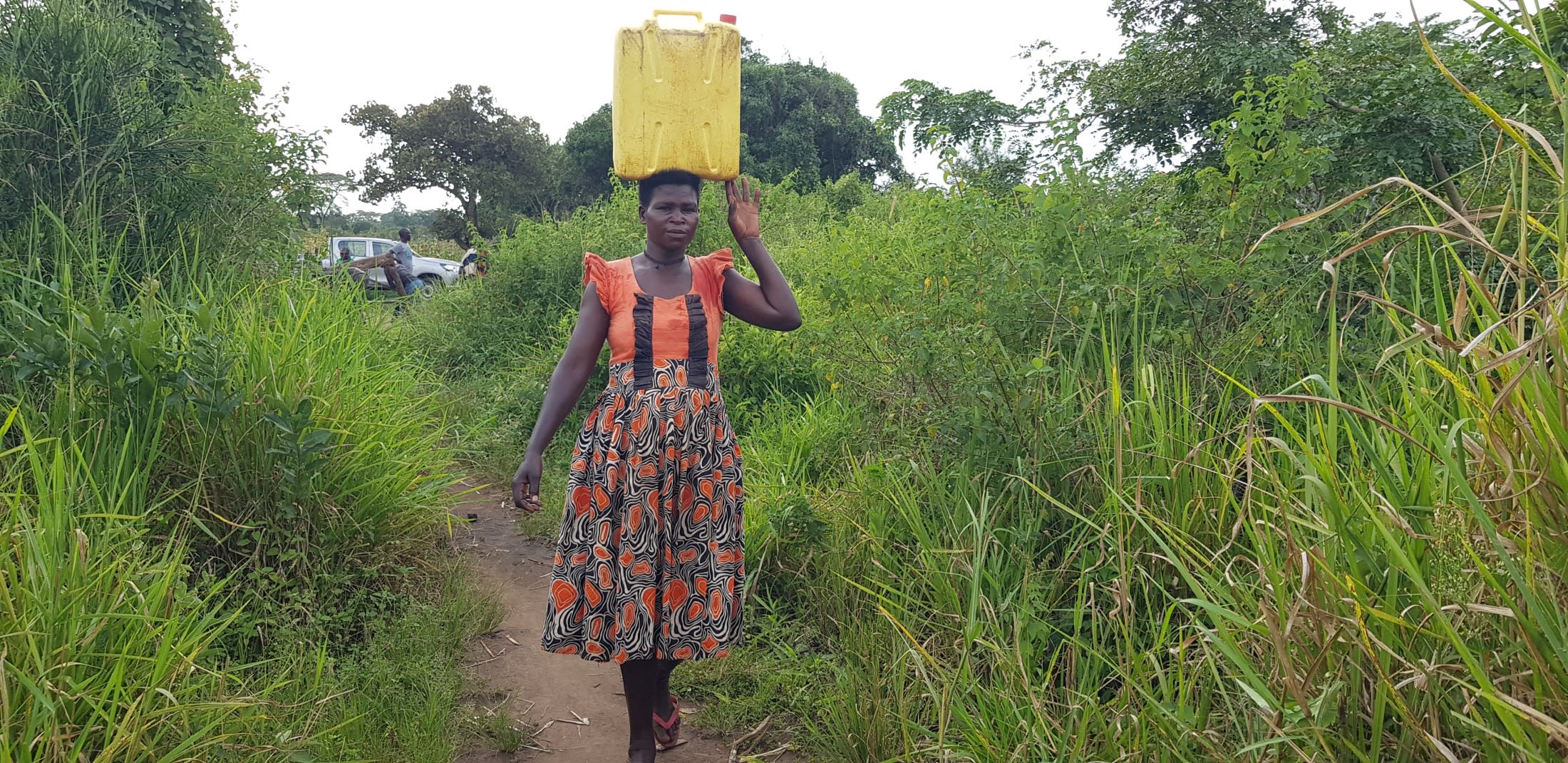Currently, the 250 people of Kyamakezi walk up to two hours each way to collect water from a well in the neighboring community of Kyabagabu since they have no reliable water source of their own.
The neighboring water point is a long distance away, overcrowded with long lines, and, at times, use is restricted altogether. These factors mean community members spend a lot of time collecting water: time that could be productive in other facets of their lives. The alternatives to making the long trip are purchasing water, which is a costly venture most cannot afford, or collecting rainwater during the limited rainy season.

Farmer Kiiza Annet (38), shown above carrying water, shared, "We have never received any water points as compared to other communities. We have vendors from whom we buy water at a cost, and this is so expensive in the long run. I have no option [other] than to buy the water so that I can concentrate on my business other than moving around looking for water."
Community members in Kyamakezi traditionally farm or raise cattle for their livelihood, but without a consistent water source, productivity lessens, and in turn, their incomes and families suffer. The community men often take a break from farming activities midday to accompany women along the long distance to fetch water. They use bicycles to help cart the water to save some time and energy. Still, even with the aid of bicycles, it is a time-consuming and physically demanding process for all involved.

"I have never seen a hand pump in this village since I was born. During rainy seasons, my parents force me to harvest rainwater to relieve us from moving around to look for water," said Murungi K., 11, shown above with his toy car.
With a new well in their community, the people of Kyamekezi will be able to retain the time and energy they spend in search of water and hopefully make progress in other areas of their lives.
Here’s what we’re going to do about it:
New Borehole
This new borehole is an exciting opportunity for this community! We work with the community to determine the best possible sites for this well.
We conducted a hydrogeological survey and the results indicated the water table is an ideal candidate for a borehole well. Due to a borehole well's unique ability to tap into a safe, year-round water column, it will be poised to serve all of the water needs for this community, even through the dry months.
Community members will help collect the needed construction materials such as sand, rocks, and water for mixing cement. They will also provide housing and meals for the work team, in addition to providing local laborers. We will complement their materials by providing an expert team of artisans and drilling professionals, tools, hardware, and the hand-pump. Once finished, water from the well will then be used by community members for drinking, handwashing, cooking, cleaning, and much more.
Training
Training's main objectives are the use of latrines and observing proper hygiene practices since these goals are inherently connected to the provision of clean water. Open defecation, water storage in unclean containers and the absence of hand-washing are all possible contaminants of a household water supply. Each participating village must achieve Open Defecation Free status (defined by one latrine per household) prior to the pump installation for this borehole well.
This social program includes the assignment of one Community Development Officer (CDO) to each village. The CDO encourages each household to build an ideal homestead that includes: a latrine, a handwashing facility, a separate structure for animals, a rubbish pit and a drying rack for dishes.
We also implement the Community-Led Total Sanitation (CLTS) approach with each of our village partners. This aims to improve the sanitation and hygiene practices and behaviors of a village. During these sessions, village leaders naturally emerge and push the community to realize that the current practices of individual households – particularly the practice of open defecation – are not only unhealthy, but affect the entire village. CLTS facilitates a process in which community members realize the negative consequences of their current water, sanitation and hygiene behaviors and are inspired to take action. Group interactions are frequent motivators for individual households to build latrines, use them, and demand that other households do the same.
Improved Sanitation
The aim is that all households own an improved latrine. Many households do not use a latrine but use the bush. Due to open defecation, feces are spread all over the village. This leads to waterborne diseases and contamination of groundwater and surface water. Our aim is that the community is able to live a healthy life free of preventable diseases. We endeavor that at the end of our presence in the community, people will have both access to sustainable, clean water and access to sanitation. We have now organized families to form digging groups for latrine construction, and empowered them with tools to use.

 Borehole Well and Hand Pump
Borehole Well and Hand Pump
 Rehabilitation Project
Rehabilitation Project












